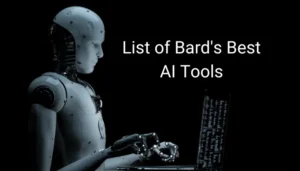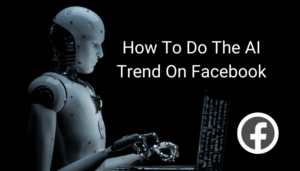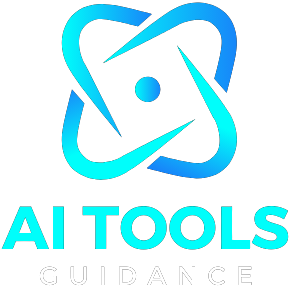With the ever-evolving nature of artificial intelligence (AI), the jargon that accompanies it also causes confusion. Two of the most commonly discussed points today are Generative AI and Large Language Models (LLMs). Although used interchangeably in popular conversations, they are not the same thing. Knowing the differences and how they compare is crucial to professionals, researchers, and hobbyists alike who work in the AI field. This article explains what is different in each one of these technologies, how they compare to each other, and how they are different from each other.
Read: Is ChatGPT generative AI?

What is Generative AI?
Generative AI is an artificial intelligence that can generate new content. This may be in text, image, audio, video, or even code format. What is most fascinating about generative AI is that it can create data that resembles human-created data. In contrast to simply viewing statistics or choosing from it, generative AI models produce outputs that can be novel, creative, and usually virtually unrecognizable from human-generated ones. Examples include image synthesizers like DALL·E, video synthesizers, and music synthesizers.
What are Large Language Models (LLMs)?
Large Language Models are generative artificial intelligence models best suited to understanding and producing human language. They are trained on enormous amounts of text data using deep learning techniques, primarily transformer models. Their core task is next-word prediction, which allows them to produce coherent paragraphs, respond to queries, summarize content, and translate language. LLMs like OpenAI’s GPT series, Google’s PaLM, and Meta’s LLaMA are prime examples. Even though LLMs are very powerful, their domain of operation is primarily language and text work.
The Overlap Between Generative AI and LLMs
LLMs are a specific application area within the general group of generative AI. That is, all LLMs are generative AI but not all generative AI models are LLMs. The analogy is quite like squares being rectangles but all rectangles not necessarily being squares. LLMs generate text which is human-like, whereas generative AI embraces a more generic set of modalities.For example, a model that is able to synthesize realistic faces from the beginning (e.g., StyleGAN) is an LLM that is not a generative AI. This sets a key division for the precise delineation of varied AI technologies.
Training Strategies: Comparable yet Diverse
Both LLMs and the other generative models of AI rely on machine learning, and more specifically, deep learning. However, they employ different training data and objectives. LLMs are trained on enormous text datasets and try to predict the next word in context. On the other hand, image-generating models like GANs (Generative Adversarial Networks) or diffusion models are trained on image data and learn to reproduce or generate images that appear similar to the training data. The underlying architecture also varies—LLMs use transformer models, while other generative models could use convolutional networks or others.
Applications of Generative AI Beyond Language
While LLMs revolutionize content generation, summarization, and comms tools, generative AI raises the bar even further in its effect. In medicine, generative models create new medicines or create medical images to support diagnosis. In fashion and design, AI designs new product concepts and fashion and even builds blueprints. In media and entertainment, generative models produce visual effects, deepfakes, and interactive game content. These activities are generally non-linguistic and beyond what is possible using LLMs, which makes the flexibility of generative AI stand out.
Text-Based Use Cases of LLMs
Giant Language Models have all human language tasks in a class of their own. They are in the frontier domain of chatbots, virtual assistants, and automated customer service. They drive writing assist software, programming code generation software, research papers summarizers software, and legal document analysis software too. Contextual knowledge, syntax, and semantics of large language models are invaluable to documentation, communications, and language-driven workflow businesses. This specialization renders LLMs unique as the first choice instrument for natural language-based tasks at their core.
Creative Potential and Constraints
Both LLMs and generative AI possess enormous creative potential. LLMs are able to write poetry, prose, and even mimic the voice of a given author. Generative visual models can paint in the style of Van Gogh or create realistic portraits of characters from fiction. Both, nonetheless, have boundaries. Their responses can be wrong, biased, or lacking real understanding. LLMs, for example, can generate factually incorrect but plausible-sounding sentences (a so-called hallucination). Similarly, image generators sometimes generate distorted or contextually unrelated images. Familiarity with such limitations is needed for safe and effective use.
Ethical Considerations
Both LLMs and generative AI have brought with them unprecedented ethical challenges. LLMs can be employed for the purpose to create misinformation, spam, or misleading data. Generative AI can be employed for the purpose to create deepfakes or infringe on artists’ intellectual property rights. Data privacy is also an issue because such models generally get trained on publicly accessible data which might include copyrighted or sensitive data. These issues need responsible use, tight control, and accountability in the use of AI. Ethical design principles of artificial intelligence apply to both domains, but the nature of abuse can differ depending on the modality.
Performance and Computational Requirements
Generative AI models, as well as LLMs require tremendous computational capabilities while training and during inference time as well. Training an LLM like GPT-4 is measured in billions of parameters and terabytes of text and requires massive volumes of GPU capacities and energy. Training high-definition image models or video generators, too, is a day or week-long process over pricey hardware clusters. This is a costly process that only permits development to large firms or institutions of research, but recent breakthroughs are also making such models more economical and available over time. Model distillation and minimal-data fine-tuning methods minimize resource requirements
Future Potential and Integration
The future of large language models (LLM) and generative AI integration is rapidly becoming a reality. Multimodal models that can process text, image, and audio in parallel are the way to go forward. Examples include image-input GPT-4 by OpenAI, Google’s Gemini, and Meta’s hybrid image-text models. Such types of models combine LLMs and general generative AI by covering a variety of input and output forms. As technology advances, the line between text-based and multimodal generative models will narrow as hybrid models produce more advanced and simpler applications.
Industry Adoption and Use Cases
All forms of businesses are applying LLMs and generative AI for commercial advantages. Generative models have use in ad campaign images, social media content, and ad video thumbnail images. LLMs like GitHub Copilot assist in coding in software development. Generative models imitate market trends in finance, and language models generalize out and help with scanning for compliance. The efficiency and responsiveness of these two technologies are revolutionizing business innovation, driving time-to-market down, and enabling new models of customer engagement. Their utilization is a reflection of increased acceptance of the innovation and productivity power of AI as a driver for business transformation.
Conclusion: Complementary, Not Competing
Generative AI and Large Language Models are two pillars upon which AI research stands today. Though very well integrated, they each have their own job and distinct strengths. Generative AI has a humongous scope that covers content generation in all media, from image to sound to word. LLMs are of the same but have to contend with language-alone issues and are best at understanding and producing human language. Rather than consider them as replacement technologies, it makes sense to regard them as complementary technologies in the AI arsenal. Overall, they are reshaping the way we communicate, produce, and engage with computers.
Read More: Generative AI Vs Predictive AI










